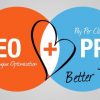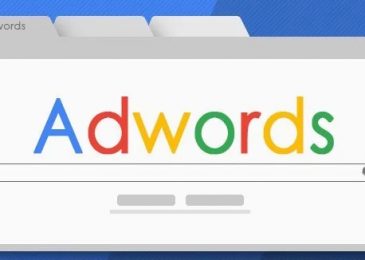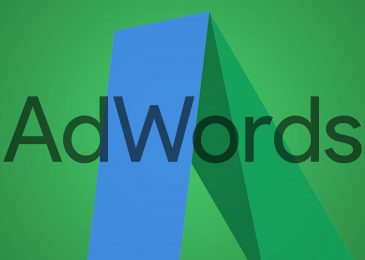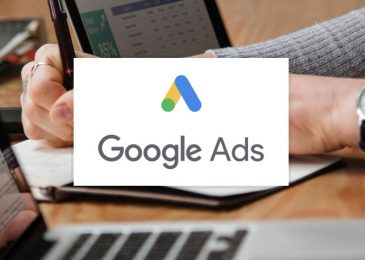Whether you’re a business owner trying to grow your business, an account manager looking for new strategies, or a PPC specialist exploring tricks to have powerful campaigns, these six often-overlooked optimizations can increase your PPC conversion rate.
1. Run a branded campaign
Branded campaigns are essential when you’re in a competitive market. If you’re not bidding on your own name, there’s a chance your competitors are. A branded campaign will help you protect your brand name against competitors and deter them from getting your clicks, impressions, and conversions!
So how do we get started?
Here’s an example from one of our clients. First, we looked at our Search Terms Report and found a trend in searches that included our client’s branded name.

We did a search for the branded terms and didn’t find our client’s ads; instead, there were three of their direct competitors’ ads in the top positions.

The next step is where we made the most impact. We created a branded campaign targeting our branded keywords that included the main service or product people would be looking up when searching for the company.
The branded campaign increased our visibility, CTR, and, most importantly, conversions and conversion rate.
Within a three-month timeframe, the branded campaign increased the overall conversion rate by 10% with 27 conversions!

Looking at the Auction Insights below, we found that competitors had 100% of all the branded traffic before we created a branded campaign for our client.

Although people are looking for your particular brand, if you’re not the first ad in the paid search, you’re giving the user a chance to look at a competitor. That might be enough for them to go to your competitor instead of scroll through the search engine result page (SERP) looking for your website.
Pro tip: Exclude converters so you don’t target the same people who are looking to purchase a second time.
2. Test branded ad copy: H1 vs H2
Now that we’ve set up a branded campaign, we are looking for the next opportunity for conversion rate optimization. It’s time to make an impact.
In this new era of shorter and distracted engagement, users are looking for a direct solution to their search at a glance. If you’re not giving that to them, they’re either scrolling past your ad or searching a new query.
Chilling.
With a branded campaign, we know users are searching for your brand, so why not put that immediately in the H1 where it’s the first copy they read?
We tested the brand name in first headline versus the second headline to see just how much of a difference this would make.
Branded in H1:

Branded in H2:

Results showed a huge spike in conversion rate with the brand name in the H1!
The conversion rate for branded H1 compared to the branded H2 was almost a 9% increase in conversion rate.
This test shows that impact that the first headline has. Take advantage of the fact that people are searching for YOUR brand versus someone else’s!
3. Leverage Search Impression Share
Search impression share is another effective yet simple way to increase your average conversion rate. This metric shows you the percentage of impressions your campaign (or ad group or keyword) receives, compared to the number of impressions it was eligible to receive.
If you have a high-converting campaign with a low impression share percentage, this is a hidden gold mine. You’ll want to add more budget to increase the impression share and get your ads to show up more often.
Previously, we knew this was our highest converting campaign, but our search impression share was declining, and we needed to act fast.
We added more budget into the campaign that was losing visibility and conversions due to search impression share.
Within two weeks, our conversion rate TRIPLED, and the campaign’s search impression share grew.

#GetThatSearchImpressionShare
4. Optimize Your Landing Page Conversion Rate
Landing page CRO is one of my favorite facets of PPC.
There’s no “right way” to do this necessarily. The success of a test differs case by case, and you really only know by testing it out yourself.
For our client’s landing page, we had what seemed like two CTA buttons. One was a video play button, and the other was the true CTA button. Having two buttons on the landing page could confuse users who might not know which button to click.
Because the conversion rate was at a low 2.70%, we wanted to test our button theory.
On the new variant landing page, we added more social proof and reduced the size of the “Watch Overview” button so it would be less distracting.

Variant W, the original landing page.

Variant U, the new variant landing page.
Within one week, the new variant with smaller video play button with added testimonials had a 9.32% conversion rate as opposed to the original variant that carried the 2.70% conversion rate.

Keep this test in mind next time you want to test a small change but aren’t sure if it’ll make any difference. Small changes can still produce huge results!
5. Target In-Market Audiences
In-market audiences are segmented audiences identified as having expressed interest, researched, or looked into purchasing a particular product or service.
These segments are a great addition to any account.
Why?
They provide a more granular view of a visitor’s behavior. You’ll be able to see which groups convert higher for your business and so forth. Most importantly, in-market audiences give you the power to advertise to the right people at the right time.
You can either observe or target these in-market audiences; however, it’s best practice to set the audiences to observe only until you gather valuable data.
If you see audiences perform well with a large number of impressions, then you can either set a bid adjustment or create a new campaign tailored to the specific group.
In our campaign, we targeted audiences that have significantly higher costs-per-action (CPAs), high spend, and little-to-no conversions. We tested placing a negative 50% bid adjustment and targeted observation only.
Placing a negative bid adjustment tells Google to bid your desired percentage less on the segments of people who are in the market for that specific product or service.
Placing a positive bid adjustment will tell Google that you want to increase your bids by a given percentage on a specific audience that is in the market for that product or service.


The campaign’s conversion rate did increase, but the CPA also dropped by 36% compared to the previous month!
conversion-rate-optimizations-audiences-campaigns
A good follow-up test would be to add positive bid adjustments to the in-market audiences we know are consistently high-performing within search. The sky’s the limit!
Pro tip: You can layer your best performing in-market audiences with demographic audiences that work best for your campaign to jack up your conversion rate even more (or exclude the high-cost non-converting audiences)!
Read more : Best PPC Strategies you should know
______________________________________________________________________________________________
For more details about our seo service packages, pls contact us
BIGBIGSEO Team
Email: bigbigseo@gmail.com
Skype: bigbigseo
https://www.facebook.com/bigbigseo
Thank you!




